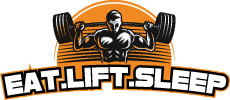Whether you’re just starting out with weight lifting or you’re an expert, wrist pain can ruin your workout. But there are ways to combat it.
Proper form
Whether you are a beginner or an experienced weightlifter, proper form can save your wrists from chronic pain. In addition to protecting your wrists, proper form will also prevent injury.
For example, if you are lifting a barbell, your wrists will be under more stress than usual. To prevent injury, make sure your wrists are in neutral position during weight lifting. This will prevent torqueing.
You should also do a few exercises designed to improve the strength of your wrists. These can be done at home or in the gym. They can include pull-ups, hanging leg raises, and barbell rows.
In addition to these exercises, you should make sure you warm up and cool down properly. This is essential to keeping the muscles in your body prepared to lift weight.
If you are a beginner, you should find a personal trainer to help you learn proper form. They will also give you tips to help ease exercise-induced soreness.
It is also a good idea to take regular breaks during your workout. This is especially true if you are lifting heavy weights. By allowing your muscles to rest, you will be more likely to perform at a higher level during your workout.
You can also use a wrist support to reduce stress on your wrists during your workout. Wearing gloves can also help reduce torqueing. You should also use heat and ice on your wrists to reduce inflammation.
Finally, a strong grip can help protect your wrists from injury. You should try to use a neutral grip, which is in between an overhand and underhand grip.
Although there is no one correct way to lift weights, proper form is an effective way to avoid wrist injury.
Overloading your muscles with too many reps
Using too much weight in your lifts can have a negative impact on your joints. It might even cause you to suffer from wrist pain. To prevent this, consider taking your time and listening to your body. The right workout plan can also help you avoid overstressing your joints.
The hammer curl is a good example of this. It requires you to jerk up a weight with your core and control the weight as it goes down.
The best part is that you can use that same weight again next time. This is called periodization. It is a good idea to have at least one heavy day a week and one light day. You can also try taking a long walk, or even a quick hike.
The most important thing to remember is that a little too much is not always better. Lifting heavy can be beneficial for muscle growth, but too much weight can lead to injury. To avoid this, be sure to do your lifts at a reasonable pace.
You might also want to think about the many benefits of lifting weights, including increasing your confidence and mood. It is also a good idea to use some weights you don’t normally use. This can also help you keep track of your progress.
As with any form of exercise, you should listen to your body. You may want to stop before you feel too exhausted. This is especially true if you’ve worked out for more than an hour or two.
Lifting the right weights can also sculpt your body. You might want to get a personal trainer to teach you the proper technique. You should also keep track of your workouts, as this can help you recycle old ones.
Post-traumatic arthritis
Using weights to relieve pain and stiffness is one way to deal with post-traumatic arthritis. However, you should only lift weights that are appropriate for your body weight. Lifting too heavy can cause a lot of injury.
Weightlifting can also make you feel tired. You should only lift weights that will allow you to complete at least 12 repetitions. You should also exercise for at least 20-30 minutes twice a week.
Physical therapy can also help to increase the strength around the joint. The stronger the muscles, the less pressure they will have on weaker joints. This will help to relieve the pain and improve your daily function.
Aerobic exercise can also help to ease the pain and reduce inflammation. An aerobic workout will increase blood flow and stamina. It also improves your mood. Some examples of aerobic exercises are swimming, cycling, and elliptical machines.
Weights can also be used as a tool to increase your lean muscle mass. These can be used in a home weight machine or resistance bands. You can strap adjustable weights to your ankles and wrists for easy access.
You should also avoid lifting weights above your shoulder or in the abdominal area. If you have pain, you may need to take anti-inflammatory medications or get a cortisone injection. You should also avoid doing abdominal exercises with your hands behind your head.
Exercise is also important to help manage post-traumatic arthritis. It can help you to relieve pain, maintain a healthy weight, and maintain balance. It can also increase energy, improve your mood, and help to reduce the inflammation associated with arthritis.
If you want to get in shape, you should talk to your doctor before starting a new fitness regimen. He or she can recommend exercises that are safe and effective.
Ligament injuries
Whether you’re a newbie to weight lifting or an experienced athlete, you’ll need to take safety precautions to protect your joints. Some injuries are easy to prevent, while others may require surgery. You’ll also want to check with your doctor about what type of treatment is best for your injury.
Weight lifting is a popular exercise that focuses on increasing muscle mass and strength. However, it also puts unnecessary stress on your joints. This can lead to a variety of injuries, including knee ligament damage. If you’ve been suffering from a knee injury, it’s best to put your weight lifting on hold until you’ve fully recovered.
Weight lifting injuries are often caused by improper form or overloading. This can cause muscles and tendons to become strained, and may require surgery.
The most common injury for weight lifters is muscle strain. This happens when a muscle becomes overused, or when a tendon becomes inflamed. The symptoms may include pain and cramping.
Another common injury is a sprain. A sprain is a stretch in a ligament. This can happen when you fall, get hit or twist a joint.
A sprain can be treated with anti-inflammatory medications and physical therapy. The pain and swelling of a sprain will vary depending on the severity of the injury.
Another type of injury is a rotator cuff tear. This injury occurs when the rotator cuff muscles become inflamed. Treatments for a rotator cuff tear include cortisone injections and physical therapy.
Another common injury in weight lifters is an ankle sprain. An ankle sprain is a mild tear that usually heals on its own. However, more serious injuries can require surgery. In fact, people who have ankle sprains may need to take crutches when walking.
Should I Use Wrist Support Wraps to Prevent Wrist Pain While Weight Lifting?
Wrist support wraps for gym can be beneficial in preventing wrist pain while weight lifting. They provide stability by compressing the joint and reducing excessive movement. This can help alleviate strain and discomfort during heavy lifting exercises. Using wrist support wraps may also enhance grip strength, allowing you to focus on your workout without worrying about wrist discomfort.
Resting your wrists after an injury
Getting wrist pain while lifting weights is a common issue for athletes. You can improve your performance and prevent injuries by wearing the right protective gear. Using proper form is also important.
The good news is that most injuries heal on their own. If you’re not seeing improvement after a few days of rest, you’ll need to see a doctor. A physical therapist can provide home exercises to help reduce the chance of injury.
Injuries can occur from any type of activity, from weight lifting to falling on your wrist. They can also be caused by improper exercise technique or fatigue. A good warm-up is important before a workout. Also, you may want to consider alternating your routines with lower impact activities.
Using an ice pack can reduce swelling. You can also use a wrist massager to promote healing. You may need to take anti-inflammatory drugs to reduce swelling. You should also wear a wrist brace to keep your wrists stable while they heal.
Wrist sprains are common injuries among athletes of all ages and abilities. They are caused by a sudden loss of balance or a fall on your wrist. They can lead to tiny tears in the ligaments that hold your wrists together. These tears need extensive rest to heal.
Lifting weights is a great way to sculpt your body and boost your mood. However, the proper form and technique is crucial to avoiding wrist injuries.
The wrist is a complex joint. You can improve your grip strength by strengthening the muscles in your forearms and hands. If you have trouble bending your wrist at the elbow or wrist crease, consider using a wrist strap to secure a heavy barbell.





Leave a Reply